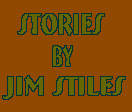

THE NAVAJO PLANS FOR THE WINTER OLYMPICS
The Navajo Nation is the Nation's largest Indian reservation, spanning the states of Utah, Arizona and New Mexico. The reservation includes some of the most beautiful natural sites in America, including beautiful Monument Valley, Canyon de Chelly, Navajo National Monument and Chaco Culture National Historic Park. San Juan County covers that portion of the reservation that lies in Utah. The county itself boasts many natural and beautiful sites including Rainbow Bridge National Monument, Canyonlands National Park, Grand Gulch Primitive Area, Dark Canyon Wilderness, the San Juan River, the Colorado River, the Goosenecks of the San Juan and hundreds of other scenic sites.
It is little wonder that film companies have swarmed to southeast Utah. Such famous films as She Wore a Yellow Ribbon, and Fort Apache were filmed in Monument Valley. The early film crews themselves have become a part of the heritage. And many remember hearing the names of John Ford, Ben Johnson, Harry Carrey, Jr, and John Wayne and connect them to the great Westerns filmed in Monument Valley and later throughout all of Southeast Utah.
Our greatest resource however is the colorful Indian people themselves. They were here long before the white people and have left us a wonderful heritage. And we, as a state, have long made economic use of these Native American resources. Yet through all of this, there have been real problems thrust upon our Indian people. These people, American citizens all, have serious economic problems. The unemployment rate on the reservation runs consistently over 40% There are socio/political problems. Racial and discrimination problems continue in some sectors. The Indian peoples outnumber the whites by a large number in San Juan County; yet, they do not have proper representation on the County Commission or hold county offices.
There are many health problems. Medical care, in all forms, is desperately needed as the health system in San Juan County fell in shambles. Education opportunities are lacking. Adequate schooling is not yet fully realized for the youth. New construction has been postponed. Environmental problems abound even while nuclear waste piles up in the county. This, while residents beg for compensation to treat their cancers and other illnesses.
Water, power and adequate shelter have been out of reach for many Navajos. Many live in destitute conditions, and their homes are without water and electricity. We can no longer tolerate holding the Indian people in third world conditions. Our people are often taken advantage of because many of our people are poor. Easy marks for exploitive industries, easy marks for the likes of nuclear waste dumps.
We do have opportunities now, all of us together, to solve the existing problems and to also protect our valued cultures and resources. In the search for viable economic activity, the travel industry stands out. People from the entire world want to see our enchanting Monument Valley. So it is a natural to build on this resource.
What will be the ultimate effect of terrorism and economic slow-down on our tourist economy? Visitation to Utah has plummeted, and it is especially severe in southeast Utah. Visitors surely aren't lining up to see our parks, monuments, and Indian lands. This has affected Navajo weavers in the sale of their blankets and rugs. How long this tourist famine will play out, no one knows. Working harder and shifting into survivor mode, I guess, is the answer right now.
This brings to the fore the need for planning and action now. Last spring, the Utah Travel Council Board of Commissioners held its marketing retreat in Moab and talked promotion and marketing. It dealt strongly with the differing needs of urban and rural parts of the state, considering a "wide view" of the state's overall tourism industry. The subject enlisted spirited discussion. Some business folk thought the primary aim of tourism promotion ought to be in bringing in hordes of visitors. Others thought that merely upgrading the quality of tourism would be sufficient to spur the economy. Others thought the state could optimize quantity as it moved toward quality.
It came down to a battle of Quality vs. Quantity. How to protect our cultures and resources while reaping the rewards of tourism was a central theme. Can we, in this rush for the tourism dollars, actually chart a sane and livable future for our people? I have always thought so; otherwise I'd have forsaken the tourist industry long ago. But we must not accept "progress" at any price, but strive together to have the best of all worlds.
Knowing this, there will still be pitfalls and a need for caution ahead.The state's program has been to leverage available advertising sources by partnering with large corporations. Also it has set up a program of "cooperative partnerships" with Utah's tourism suppliers.
So what is ahead? The 2002 Winter Olympic Games! In the beginning, I opposed the Olympic program coming to Utah thinking the sudden change would lead to too much impact for our fragile environment. We were not ready yet to protect our canyons and our environment. Many believed that the 2002 Winter Olympics would be our savior, and that we ought to capitalize on the event in order to solve many of our problems. Tourism promotion would bring in new business and new economic activity--the fresh dollars paying for the needs of our people.
And as time passed, Salt Lake City did receive the bid. The Olympics are indeed coming, and so how do we capitalize on it or to make the most of it now? The Navajo Nation quickly took note and signed on. I surely support the Navajo decision as it would help them economically. It is anticipated that fifty to seventy thousand global visitors will be in the Salt Lake City downtown area on a daily basis as well as some nine thousand representatives of the world media. Quite a number!
In January 2001, three years of work culminated with an agreement between the Navajo Nation and the Salt Lake City Organizing Committee (SLOC) for an official sanctioning of the Navajo Nation to anchor the 2002 Cultural Olympiad with an exhibit/pavilion. This exhibit is entitled: Discover Navajo: People of the Fourth World. A pavilion will include three venues: Discover Navajo, Festival of the Nations and The Gathering Place.
Another vital component of this exhibition is an exhibit on the Navajo Code Talkers of World War II. The Code Talker experience is an important contemporary part of the history of Native Americans. Preparatory to the Olympic experience, the original 29 Navajo Code Talkers were specially honored at a Congressional Gold Medal Awards Ceremony on July 26, 2001 in the rotunda of our nation's Capitol building. The Navajo Nation and San Juan County is extremely honored that Monument Valley has been chosen as a site to receive the 2002 Olympic Torch Relay. Navajo Nation president Kelsey A. Begaye said: "It is fitting that this Torch Relay, which starts in Olympia, Greece, home of the Ancient Gods, travels to Monument Valley, which is the landscape of our ancient Navajo Deities."
The Torch Relay will enter Monument Valley on Monday, February 4, 2002, during the first day that the Olympic Flame is in Utah. While in Monument Valley, the Navajo people and county residents will celebrate the spirit of the Olympics. The torch will bring the Olympic and Navajo message to millions across the world. What is so great about this is that this event represents the first time the Navajo Nation has reached out to tell its own story in its own words to the world.
The Navajo Council provided seed funding of $1.75 million to create a Navajo presence at the 2002 Olympics. Additional revenue for the project would hopefully come from corporate sponsorships, grants, ticket revenue, hospitality sales and other operating revenues. The Discover Navajo 2002 Foundation is working toward a future global Navajo program that will continue long after the 2002 Games. The Olympics serves as a springboard to even greater things. Its objectives are many fold: to tell the authentic Navajo story to the world community in the Navajo way; to stimulate tourism, economic, educational development; to provide unique educational and training development opportunities for Navajo youth; and to invite the participation from other Native American tribes to share their own cultures.
In order to achieve their aims, I believe there must be a high degree of coordination and partnership by all aspects of the tourist industry in the Navajo endeavor. In my opinion, the state and other agencies have fallen far behind in their "cooperative partnering" efforts. The state has been heavily involved in "heritage" promoting, and the white heritage thing seems to be getting the bulk of the promotion. We must also honor the heritage of the Indian people. For years, our state promotions have used the Monument Valley and Navajo peoples as a backdrop, and it is time to diligently help the Navajo people in return. Of all rural groups in Utah, it seems that the Navajo Nation has supported the Olympics the most. And we've pretty much allowed the Navajos to go it alone. We ought now to change that by helping them even more than we have.
The Navajo Nation has contributed $1.75 million to this event. San Juan County has contributed $3,000. Organizers had hoped that $4 million or so could be raised for the Olympics and for future traveling exhibits. The Nation has not yet reached its goal, though there have been some large donations from generous voluntary givers. But things are moving along. The Utah Travel Council will locate a facility for non-accredited journalists. This will be in addition to the Salt Lake Organizing Committee's media center that will cater to the 9,000 accredited journalists in the Salt Palace and the media center of the Mormon Church.
A Visitors Information Services Coalition, made up of Utah governmental agencies and businesses will staff the varied information centers at the Olympic venues. The Utah Travel Industry Coalition, which includes hotels, restaurants and other services, will join with the VIS. And we can't forget the Utah Film Commission. The Olympics will bring many requests from film companies to film on public and Indian lands, and the need for cooperation is evident. San Juan County has been quiet in their support of the Olympics. It is hoped that its officials will respond to the call and the opportunity the Olympics brings them.
It is hoped that many businesses within San Juan County may contribute in some fashion. All federal, state, and county agencies in southeast Utah ought to support this. The environmental groups and other non-profit entities ought to jump aboard. All county and town travel councils or committees need to coordinate promotional campaigns with the Utah Travel Council--San Juan County, through its transient room taxes collected from the traveler by hotels and restaurants fund the local offices.
Some counties are failing to use these funds to attract tourists even though it has been the intent of the legislature for them to do so. There will certainly be new light cast upon Utah and the Indian peoples. The perception gained by the world's visitors will change our state--we will never be the same. The 2002 Olympics will indeed sell Utah to millions of potential tourists.
The Navajo Nation has bestowed upon southeast Utah a golden opportunity to share the dividends that will come to adjoining counties and businesses. The Olympics will remain an excellent sales tool. What we do now will affect the future. We're heading for the long term. So are the major Olympic sponsors--investing now in order to gain later profits. The financial rewards will come after the Games are over. Olympic visitors, many of them, will return to Utah as well and recommend Utah to their friends.
To maximize the effect of the intense exposure Utah will soon get, we need to build our economy for the long term. This means building business relationships now. In the aftermath of the September 11 horrific events, possibly the Olympics can indeed show the world a strength and unity of all nations--an example of peace through the Olympics. Can we show humanity at its best?
The Discover Navajo 2002 Foundation has set up a Friends of the Navajo Program in which all people may help. I would like to encourage your own giving to this cause. This project will help all of us in San Juan County, in one way or another. It will certainly aid the hospitality industry--the motels, restaurants, gas stations, and other services, which provides us jobs. And above all, it will help the Native Americans solve their problems.
For more information you may call their office at (801) 521-3463 or visit their web site at www.navajo2002.org








